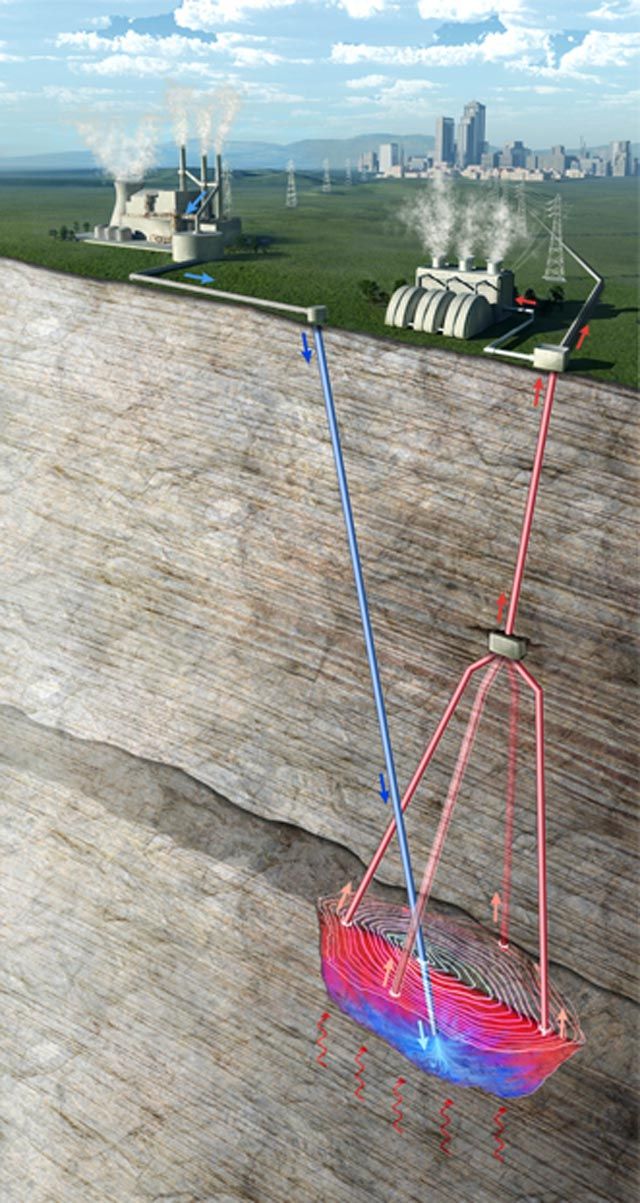Lehigh’s Energy Research Center is leading an effort to recycle the carbon dioxide emitted by fossil fuel power plants while helping Mexico boost its use of renewable energy sources and cut CO2 emissions.
The ERC has signed a contract with the University of Michoacan San Nicolas de Hidalgo (UMSNH) to study and test methods of using CO2 to enhance the extraction of geothermal energy from underground aquifers and rock formations. The three-year project is receiving $1.67 million from Mexico’s National Council for Science and Technology (CONACYT).
The project will deliver several benefits, says ERC director Carlos Romero, who is co-principal investigator with former ERC director Edward K. Levy.
Because CO2 is a greenhouse gas, scientists are trying to develop ways of sequestering it, or storing it permanently, in underground mines and rock formations and at the bottom of the ocean. Combining sequestration and the reuse of CO2 would be a cheaper way of preventing it from entering the atmosphere after it is emitted from coal- or oil-fired power plants.
In addition, says Romero, the physical properties of CO2 promise to enable it to harvest geothermal energy more efficiently than water, the conventional geothermal heat extraction medium.
Geothermal power, Romero notes, does not attract as much media attention as wind, solar and other renewable energy sources. But it generates electricity continuously—not just when the wind blows or the sun shines. And unlike fossil fuel-fired power plants, geothermal power plants produce electricity cleanly, emitting significantly less CO2 and no sulfur dioxide or other toxic pollutants, such as mercury.
Mexico, with 8,000 megawatts (MWe) of electrical output, has the world’s second-highest proven reserves of geothermal power after Indonesia. It is also the globe’s 12th-leading emitter of CO2. The country has set targets to cut national CO2 emissions 30 percent by 2020 and 50 percent by 2050.
Mexico is also hoping to double its reliance on renewables—from 17 percent of national consumption this year to 33 percent by 2018. In its drive to go green, the country is placing big hopes on geothermal power. The country has built, or is in the process of building, eight conventional geothermal power plants.
The typical sources of geothermal energy are volcanic rock formations, deep saline aquifers and hot dry rock formations, which lie farther beneath the earth’s surface. If the temperature in a water-dominated reservoir is high enough, engineers can harvest geothermal energy by drilling a production well to the reservoir. The pressure from the heat of the water, combined with the difference in pressures on the aquifer and on the surface, causes the water in the reservoir to rise to the geothermal plant, where it turns the turbines that power the generators to make electricity.
In its project in Michoacan, the ERC will perform simulations and experiments using supercritical CO2 (which has been heated and pressurized) as a medium to extract heat from all three types of geothermal energy sources.
Because of its lower viscosity and larger density differences at different temperatures, says Levy, supercritical CO2 is more mobile than water and should therefore percolate more readily into a geothermal reservoir. Heated CO2 will rise through the production well, creating several options for generating power. The hot gas can turn the turbines to power the generator or it can be diverted into a heat exchanger working with an organic fluid or other medium. The heat would convert this fluid to steam to turn the turbines and power the generator. The heat can also be used in the process to capture CO2 at a fossil fuel-fired power plant, or for district heating.
The superior properties of supercritical CO2, says Levy, also give it the potential to mine geothermal energy more efficiently from a reservoir that lies closer to the earth’s surface. Water temperature is typically lower in these aquifers but their easier access reduces drilling costs.
UMSNH, says Romero, has two experimental geothermal units capable of generating 300 megawatts of electricity. The ERC and UMSNH will convert one unit into a pilot plant utilizing supercritical CO2 and an organic heat-exchange fluid. Later, the researchers will install and test a pilot plant at UMSNH and deploy the system at a geothermal site.
The long-term goal is to construct a geothermal plant in Mexico near or adjacent to an oil- or coal-fired power plant providing a readily accessible supply of CO2.
The collaboration with CONACYT is the fourth major project the ERC has conducted in the past six years in Mexico. ERC researchers have also completed projects in the U.S., Canada, China and Europe.

